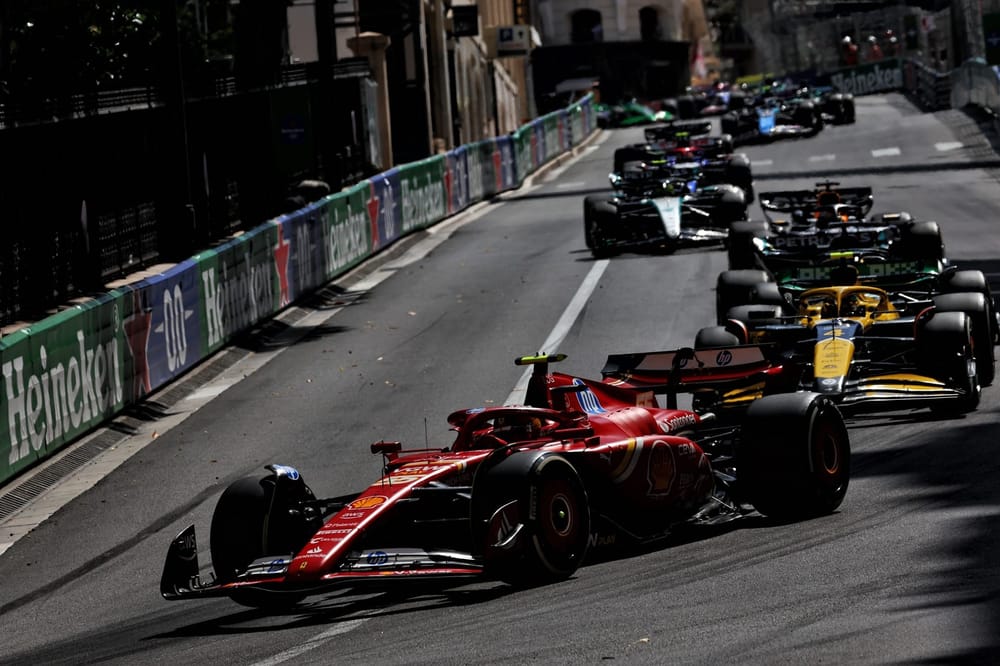Up Next

The 2024 Formula 1 campaign is now one-third done and most teams have brought significant upgrades to their cars, all of which were already efforts to address their predecessors’ weaknesses.
As ever in the F1 development race, it’s been about trying to fix problems without compromising existing strengths in the process. Looking at the performance traits of a team’s current car compared to what they had in 2023 can reveal much about the development direction.
A team losing out in the short-term isn’t always down to everything being worse - sometimes it’s part of a process that requires taking an immediate step backwards to allow big gains in the future, and that’s clearly the case for some of the current grid.
But performance is what matters most in F1. So here’s our quickfire guide to who has won and lost in F1's 2024 development war - so far.
Winner: McLaren
Improving its weak point
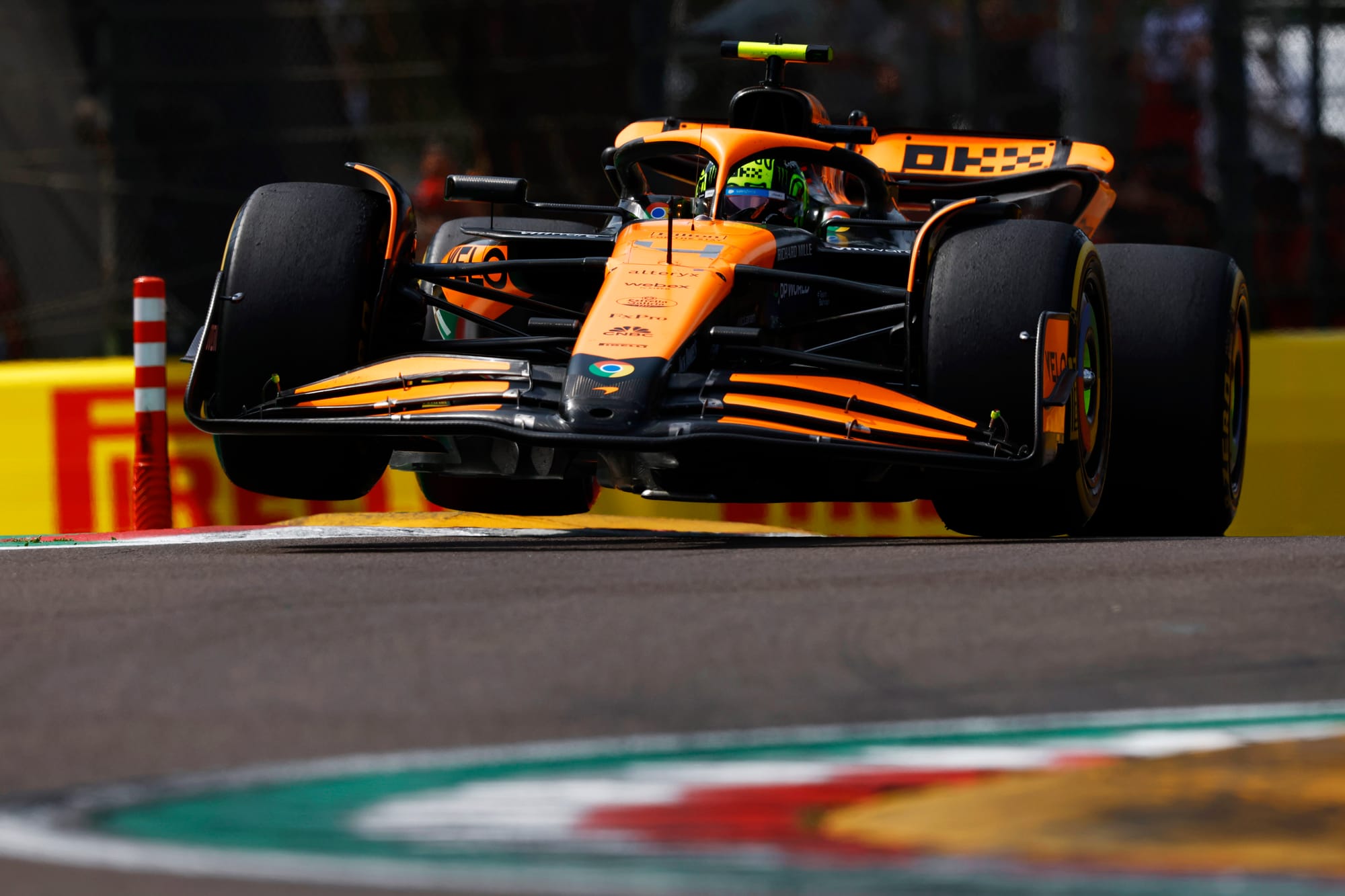
You get very different answers to the question of how the McLaren has changed this year depending on what point of comparison you use. That it has improved is an irrefutable fact given its performance is better and it has racked up a massive 167 points more than at this point last season.
The early-season McLaren in 2023 was lacking in downforce and pace, but a series of upgrade packages turned it into a consistent podium finisher.
McLaren ended the season with a car that was outstanding in fast corners and struggled in slow turns, particularly long-duration ones.
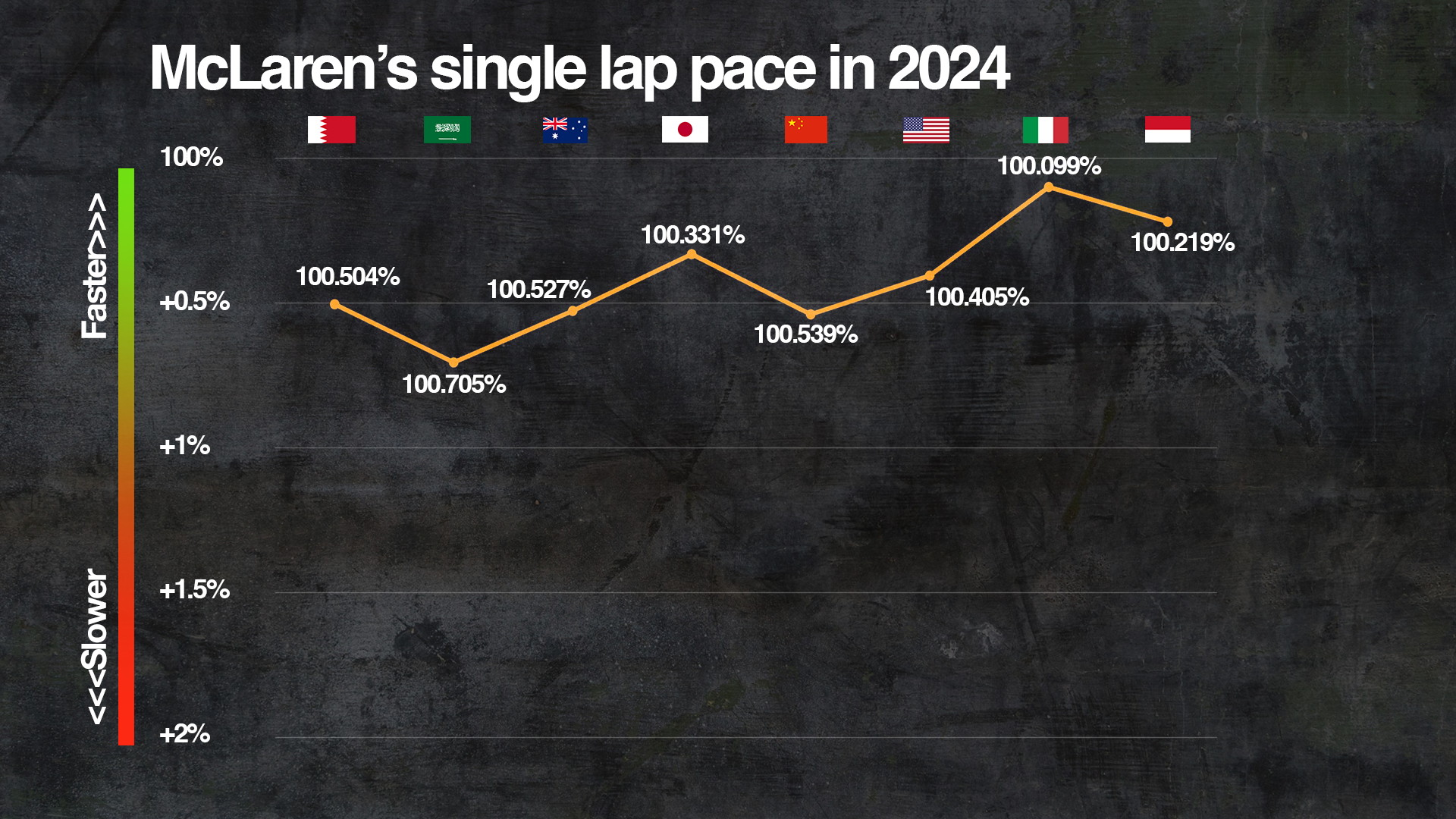
But that weakness has improved this year, particularly with the upgrade introduced in Miami last month that led to a leap forward after a solid, but unspectacular, start to the season.
Team principal Andrea Stella admits that’s come as something of a surprise and points to an effect the team doesn’t yet fully understand.
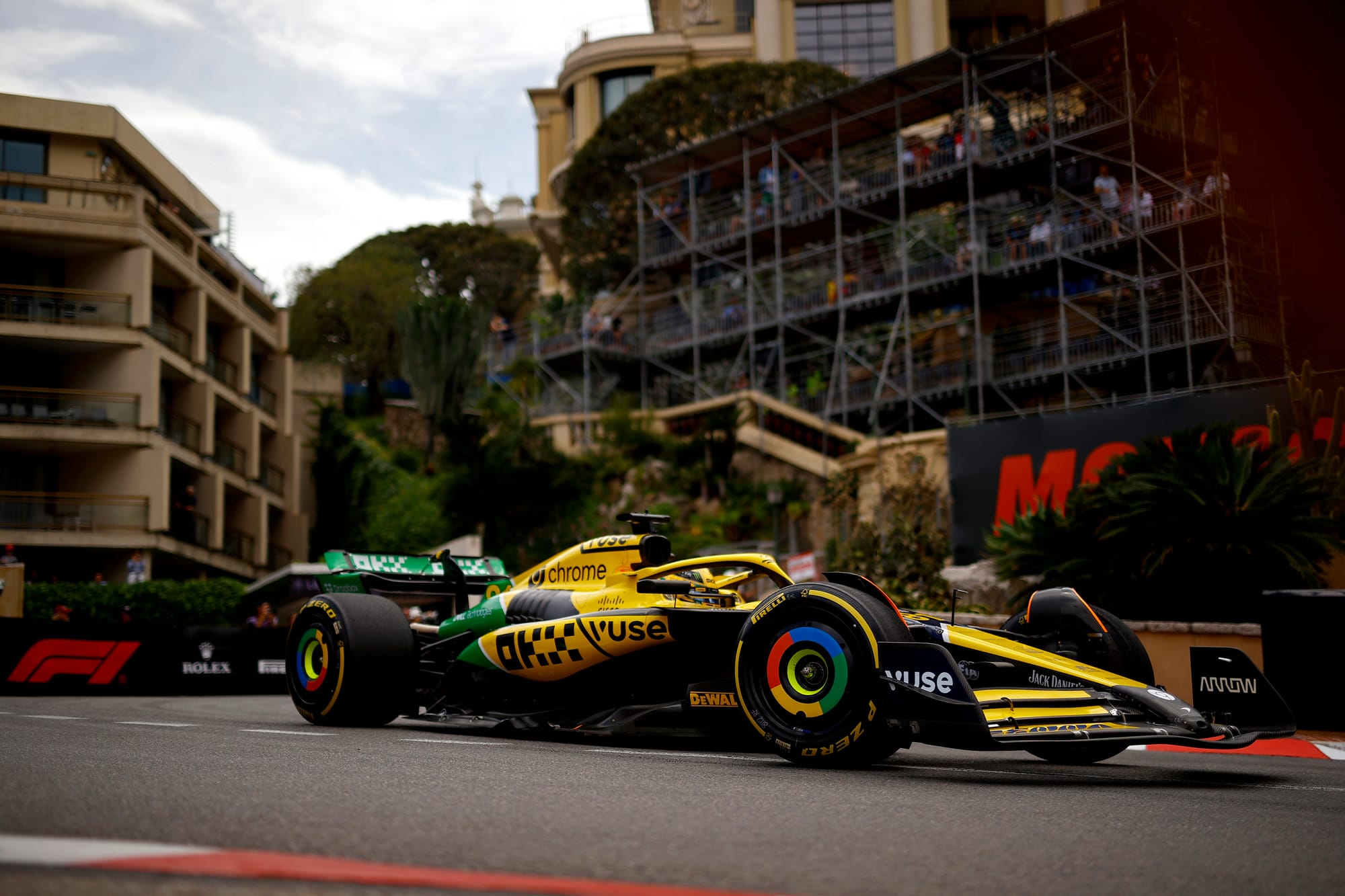
“The car seems to be well behaved in low-speed [corners],” he said recently, before adding: “Slightly more than we anticipated.”
Getting to the bottom of the reasons for that could point McLaren in the right direction on a journey to produce a strong all-round car that Stella previously said will take at least one year to complete.
Loser: Alpine
Everything is worse
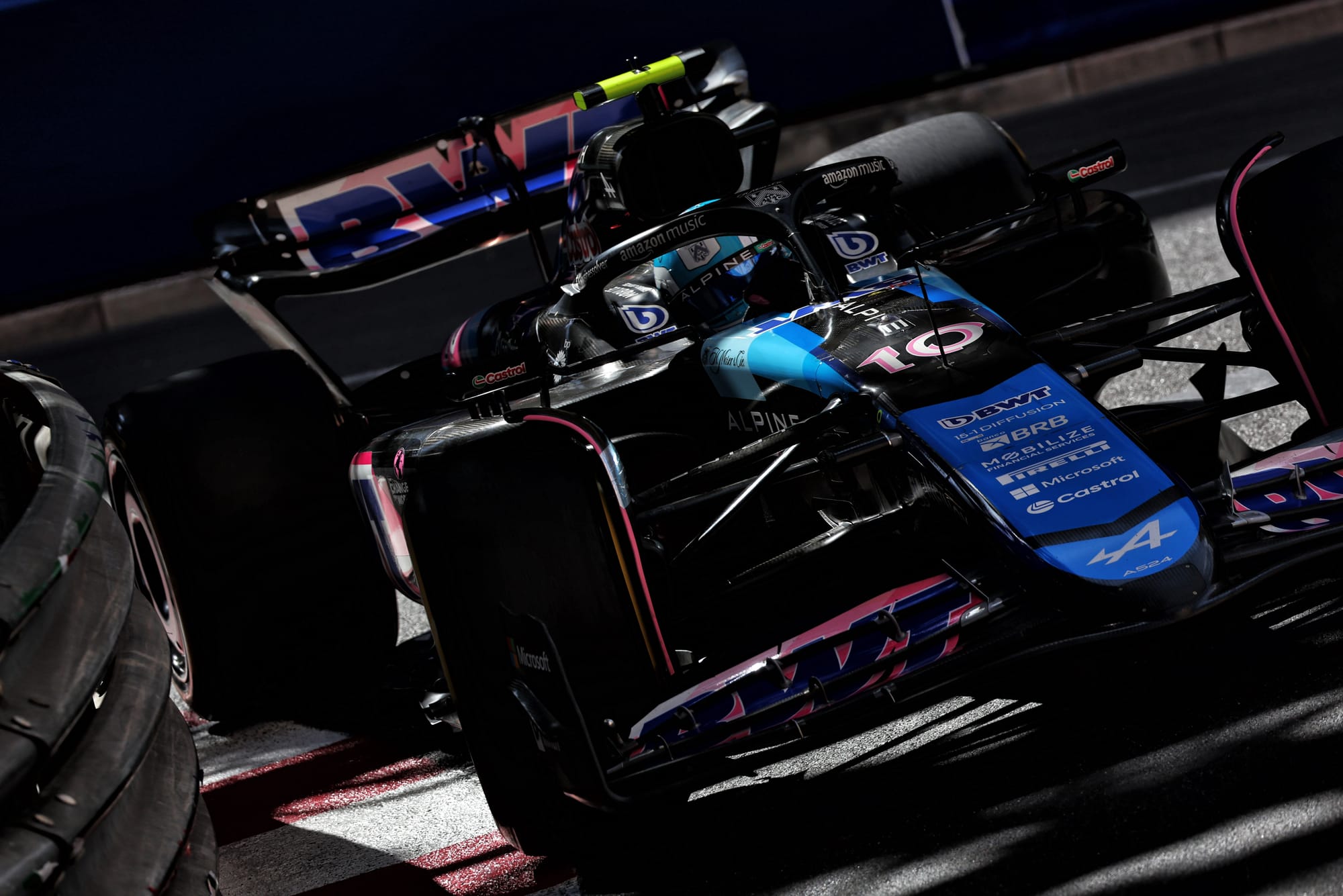
Alpine has pretty much traded all of the modest strengths of last year’s car for weaknesses. There are at least signs of progress, but it’s all about recovery and damage limitation with a car that was supposed to lay the foundations for big gains into 2025.
The A524 started the season overweight, a legacy of the monocoque failing the lateral crash test, but that problem has at least now been tackled.
It was also lacking in downforce and weak on traction. Unquestionably, it was the slowest car in the field early in the campaign.
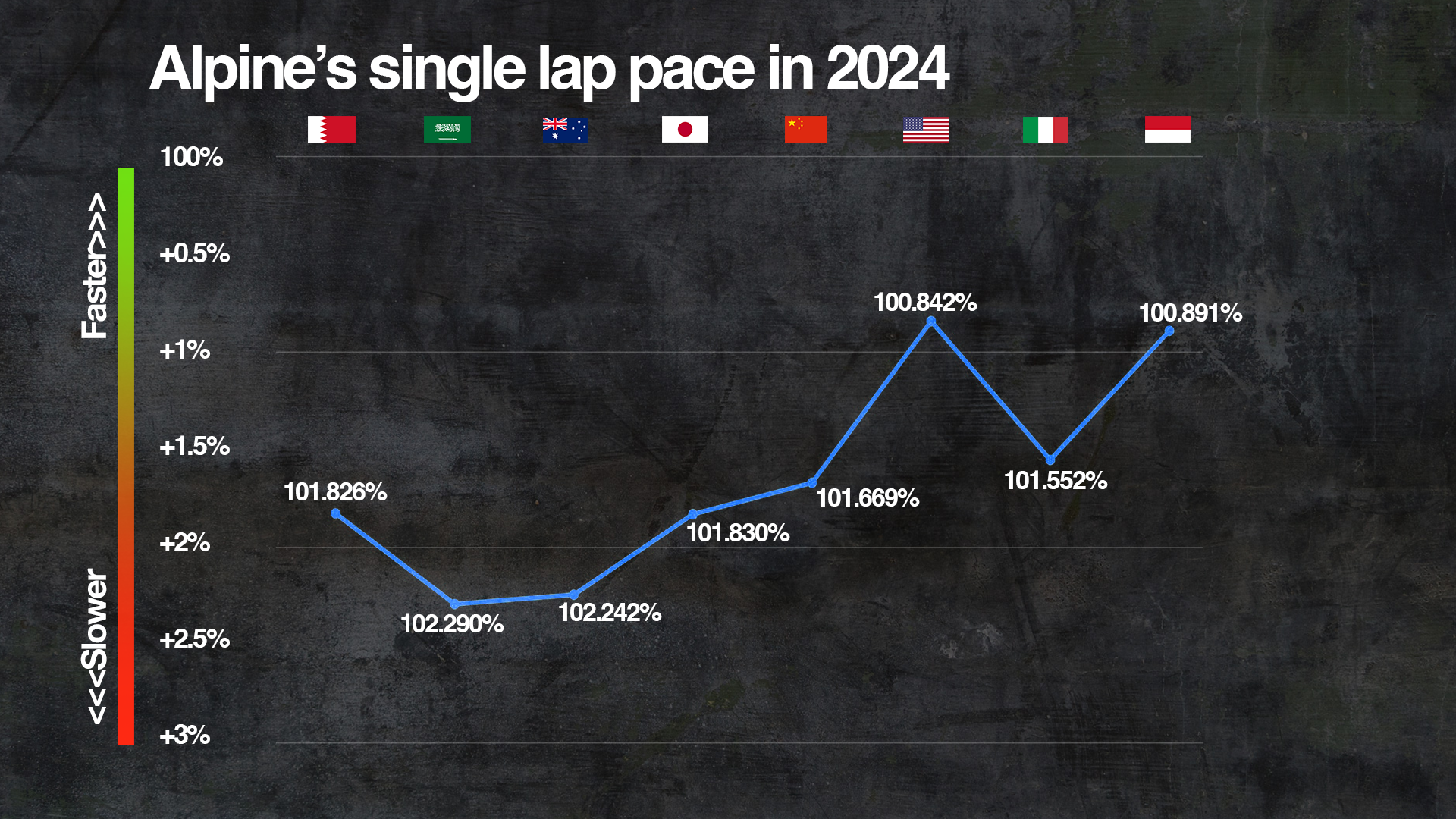
Things have improved a little since then and it’s now, on average, only the second-slowest car, having moved ahead of Sauber. The worst of the troubleshooting is done, and team principal Bruno Famin says it’s now time to switch to what he calls the “second phase of development”.
The car is generally stronger in the faster corners than the slow-speed ones. It’s also understood that the arrival of new executive technical director David Sanchez has led to some new ideas being incorporated into the upgrade plan that it is hoped will accelerate the team’s recovery.
Winner: Haas
Tyre-chewer no more
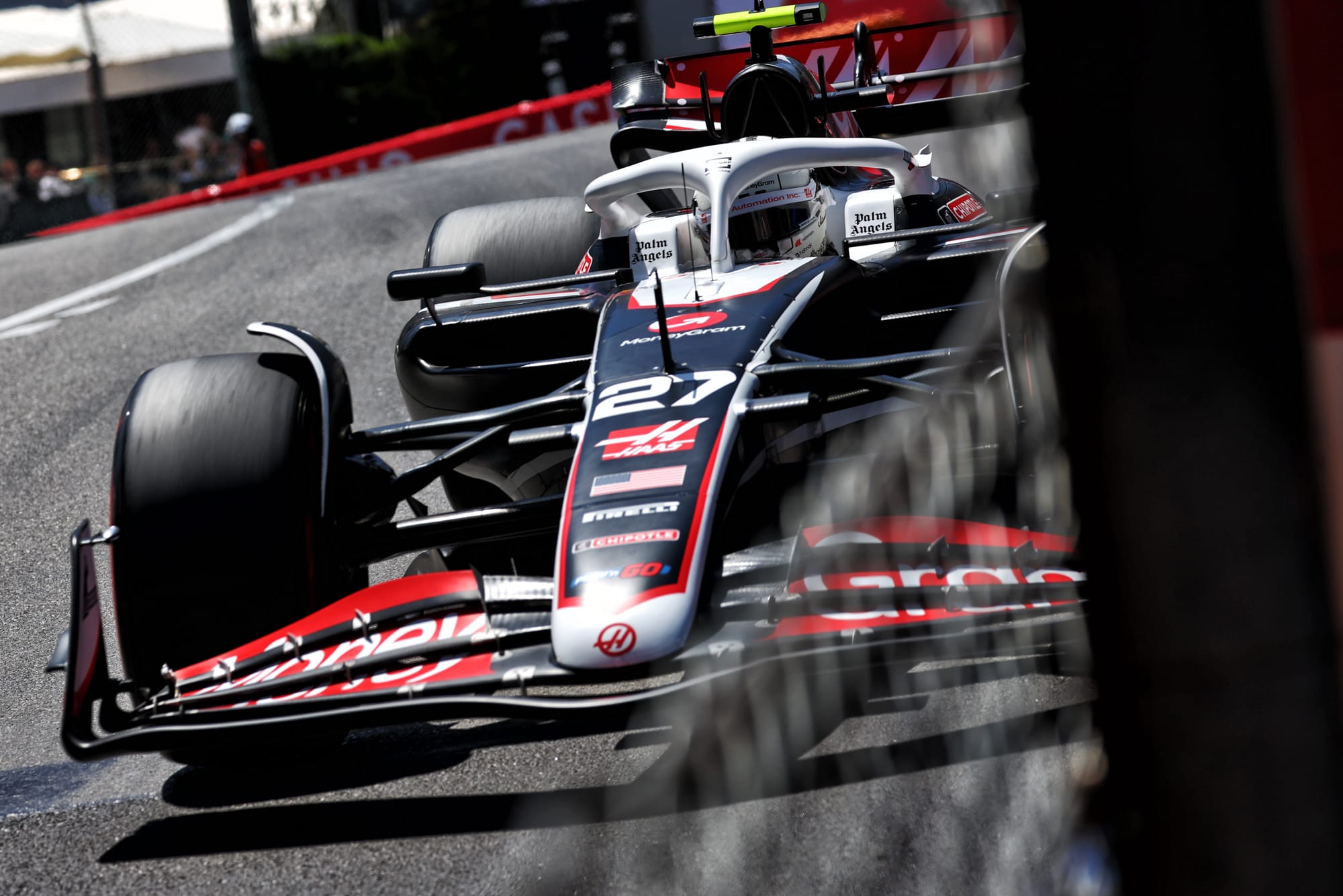
The Haas has gone from a tyre chewer last year to a car that works very well over race stints.
While that’s partly down to the team’s intense focus on how to optimise the way it runs the car, fundamentally it’s down to the aerodynamic characteristics.
Last year’s Haas VF-23 suffered from aerodynamic instability at the rear. This year, the downforce created at the rear is vastly more consistent. According to technical director Andrea De Zordo, that’s the main improvement.
“It is a lot more stable and an improvement for the feeling of the driver and [on] traction,” he said.
There’s still a need to make the car a little stronger in the fast corners, as well as to improve the front end downforce.
And that will only enhance a car that’s been strong enough to make Q3 four times and score seven points already in 2024.
Loser: Aston Martin
Tricky to drive
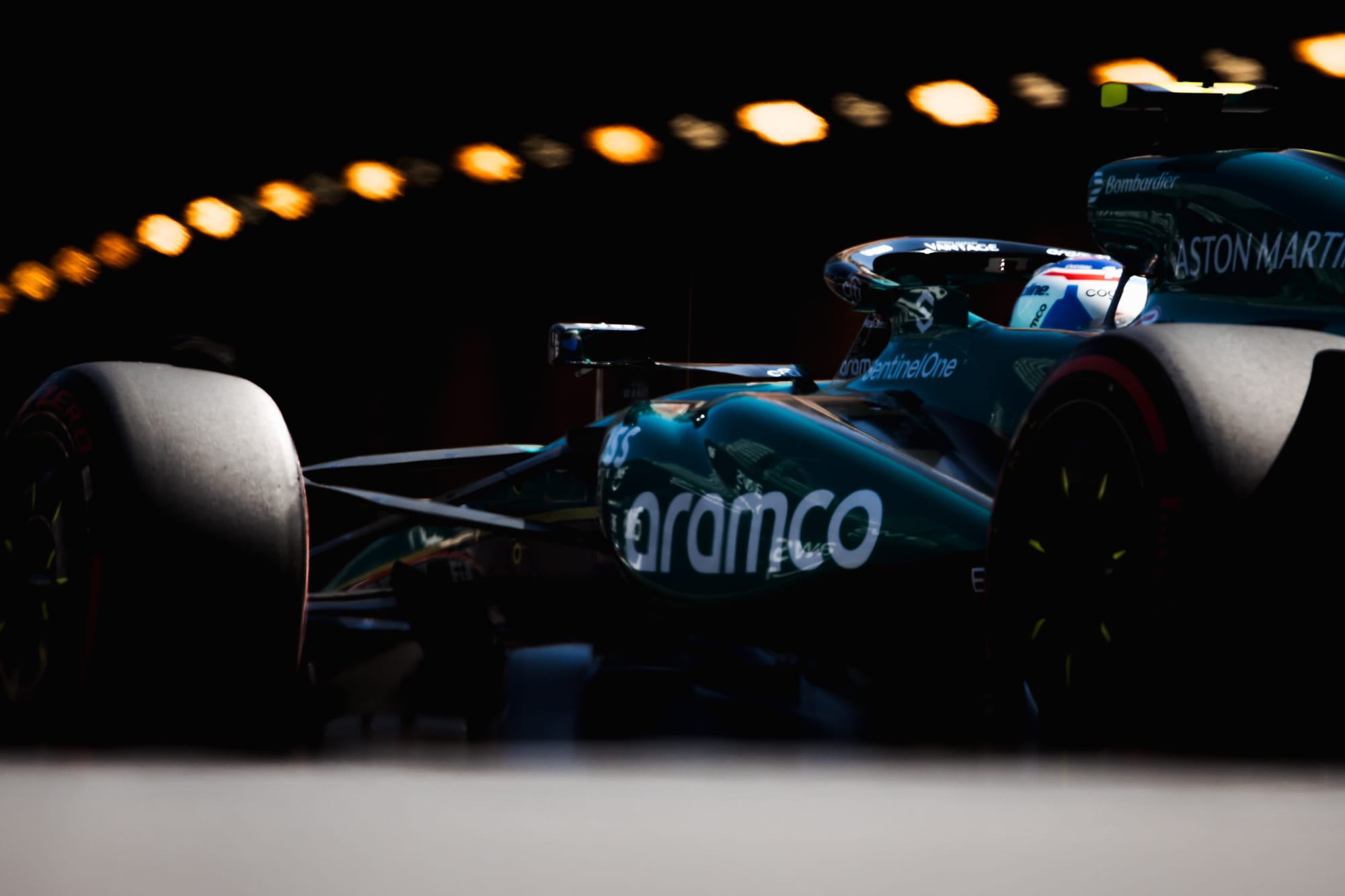
Last year’s Aston Martin was strong at the start of the season, picking up six podiums in the first eight events. The car was very quick in the slow stuff in particular and was also a consistent, predictable machine.
However, this year that’s changed. In fact, that process started last year with upgrades that created some unwanted characteristics. The car is not so good in the slow corners - and, worst of all, it seems to be sliding down the order.
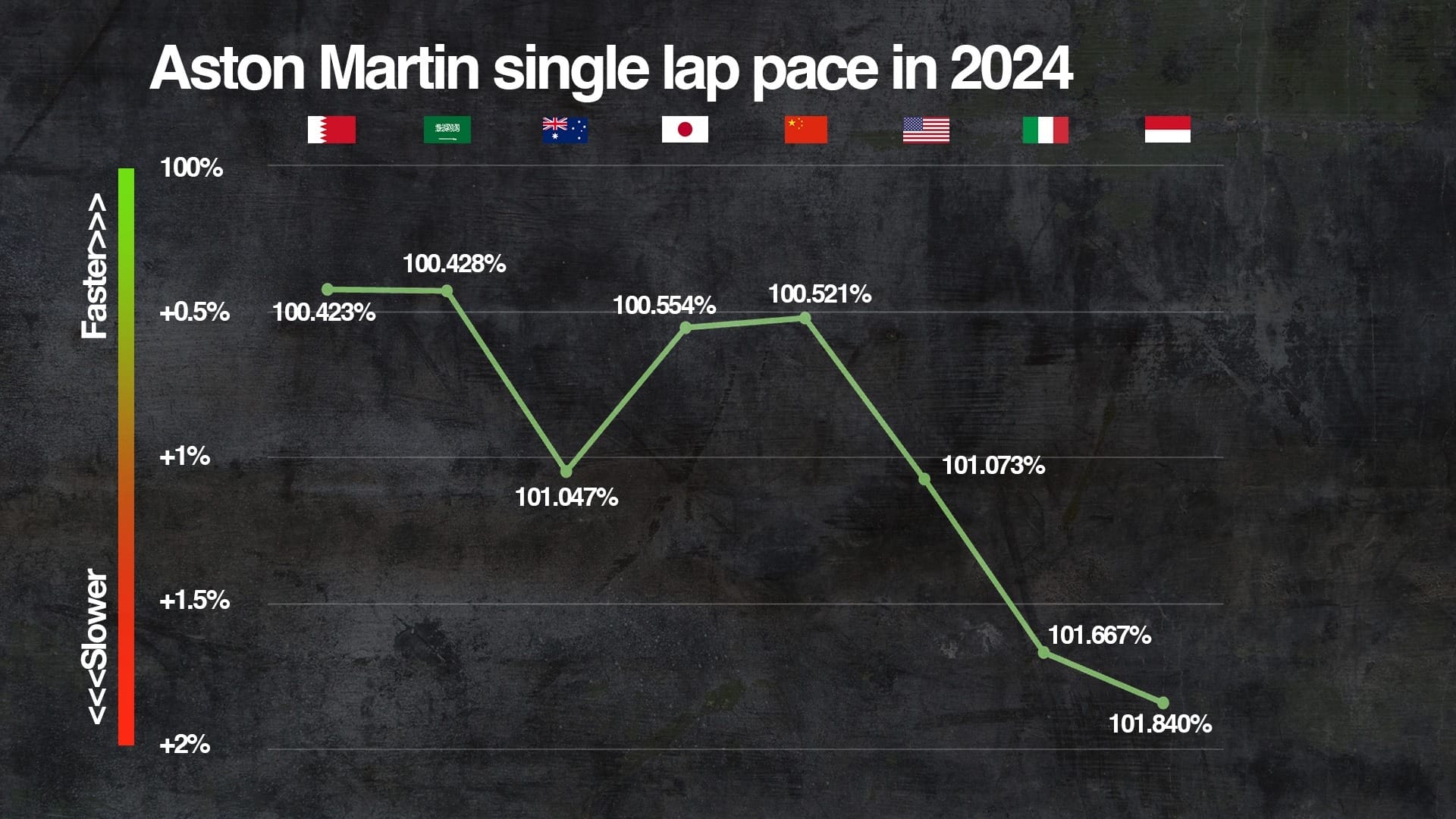
Lance Stroll refers to “balance issues” - specifically “entry oversteer, mid-corner understeer” - and a car that’s “not good over the kerbs”.
Fernando Alonso complains that the cars this year have become more critical in the search for downforce, making every team’s car “a little bit more difficult to drive for everybody”.
But the Aston Martin seems to suffer from this issue more than most.
That’s a lot of problems, and reflects a team that is struggling to add performance to the car consistently without impacting the characteristics negatively.
Loser: Williams
Now an all-rounder
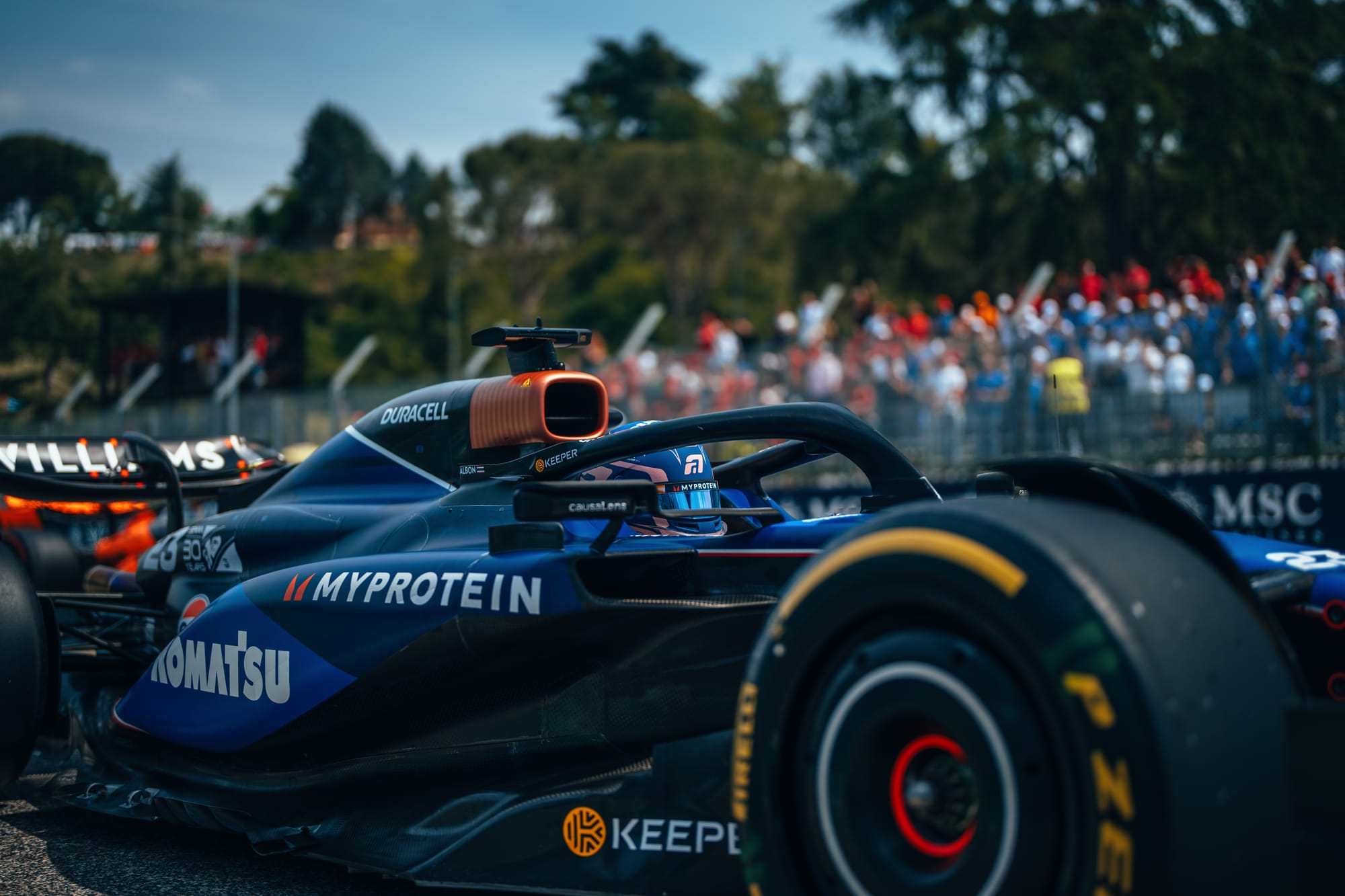
The 2024 Williams is a classic case of the need to go through some short-term pain for long-term gain. What’s a loser right now looks set to be a big winner on a longer timeline.
The main strength of last year’s Williams was that it was low-drag and therefore a rocketship on the straights. It’s given away that advantage this year, but for good reasons.
It now has a car with the amount of downforce needed to be a serious midfield contender everywhere. That’s reflected in the fact Alex Albon is a Q2 ever-present - as well as reaching Q3 and scoring two points in Monaco.
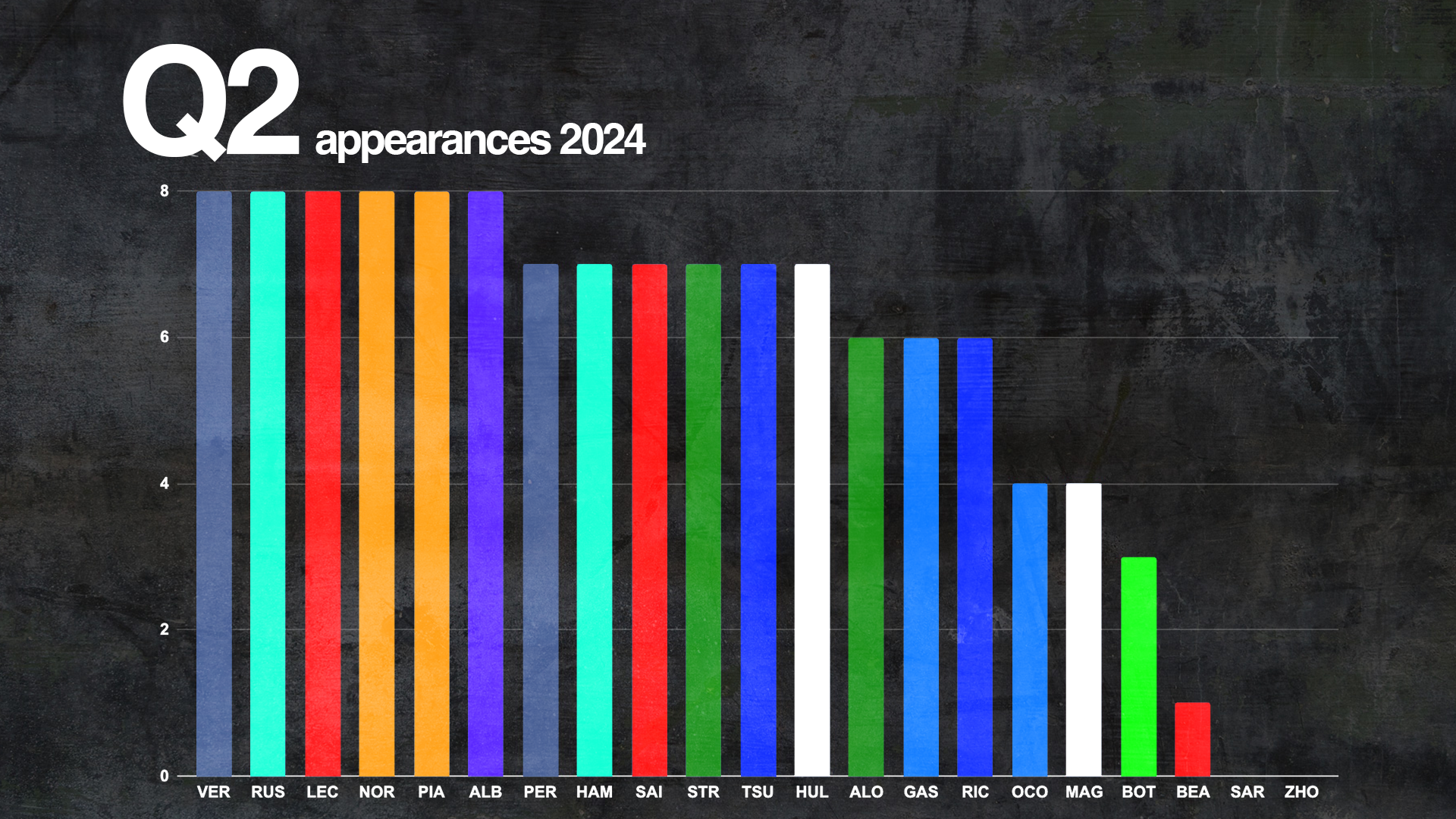
The Williams FW46 is a less peaky car, but one that’s now a decent all-rounder.
As its head of vehicle performance Dave Robson puts it: “Fundamentally, being more consistent is the right way to go.”
Crucially, Williams has also ironed out one of the main weaknesses of last year’s car: the tendency to lock front wheels under braking for slow corners.
However, it’s still suffering from a long-term Williams problem of being overweight. In the early stages of the season that cost as much as four and a half tenths of a second per lap.
All of this adds up to a car that is decent, but the winter car-build troubles and series of accidents have combined to knock back upgrades.
Winner: Ferrari
Peakiness banished
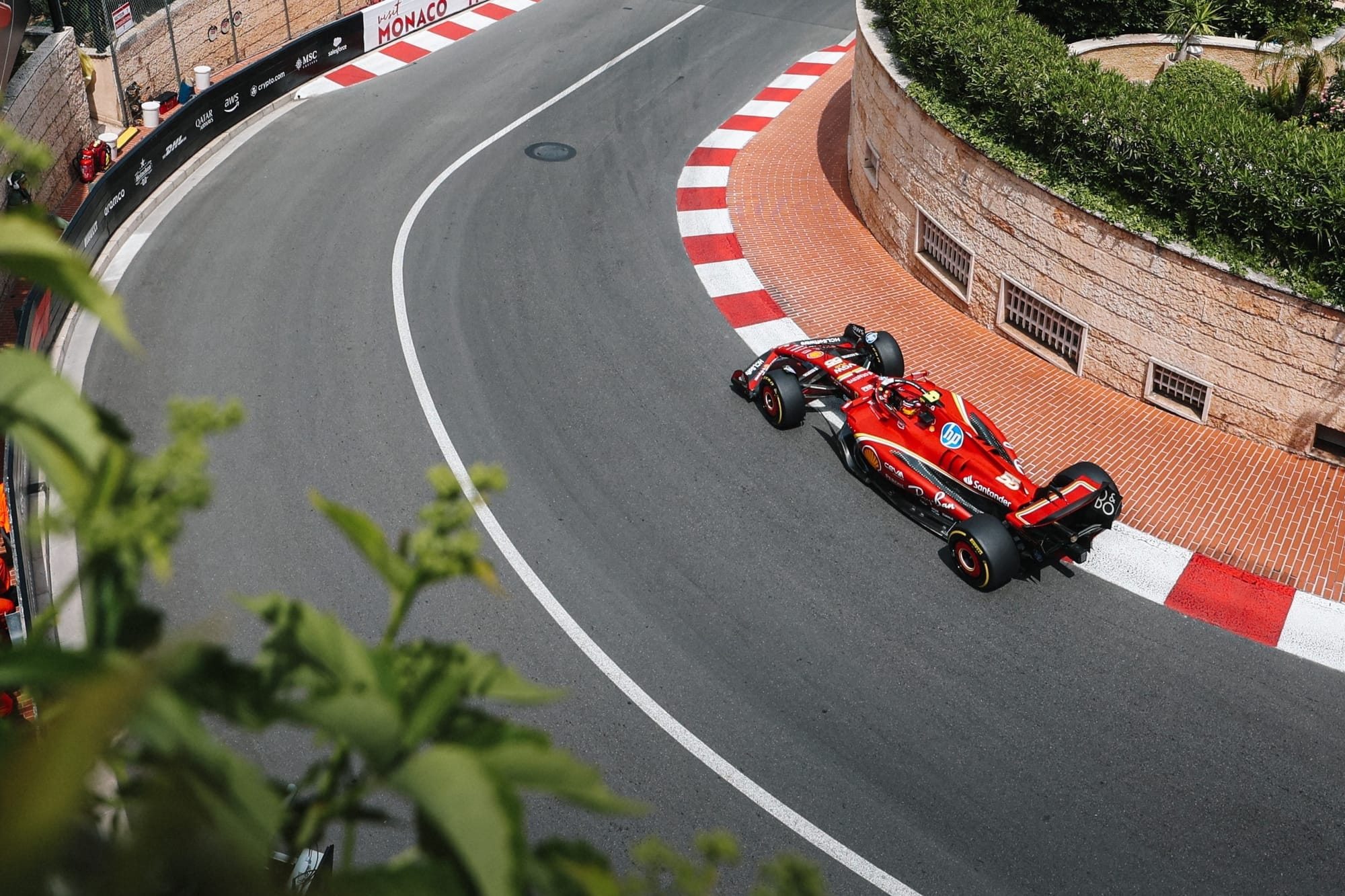
Last year’s Ferrari was aerodynamically inconsistent. That meant that for much of the season it had too lively a rear even for Charles Leclerc, meaning understeer was dialled in to calm that down. That instability also made it very hard on its tyres.
That started to change last year and is no longer a weakness in 2024, with the Ferrari now a good, consistent and predictable car that’s generally kind on its tyres.
It has also sacrificed a little of its qualifying performance for race pace, which makes for an all-round gain given at times the Ferrari last year was able to be quickest over a single-lap but slid to a distant second- or even third-fastest in the race.
This year, the Ferrari has at times been the best in races in terms of tyre management.
As Monaco showed, it is also strong over the kerbs and is perhaps the best in the field on this score.
Ferrari is just lacking that final edge of pace to challenge Red Bull consistently. But while its average single-lap performance is fractionally worse than last year, it’s now in an all-round better place - as proven by it having 130 points more than at the same stage in 2023.
Loser: Mercedes
Slow-corner struggles
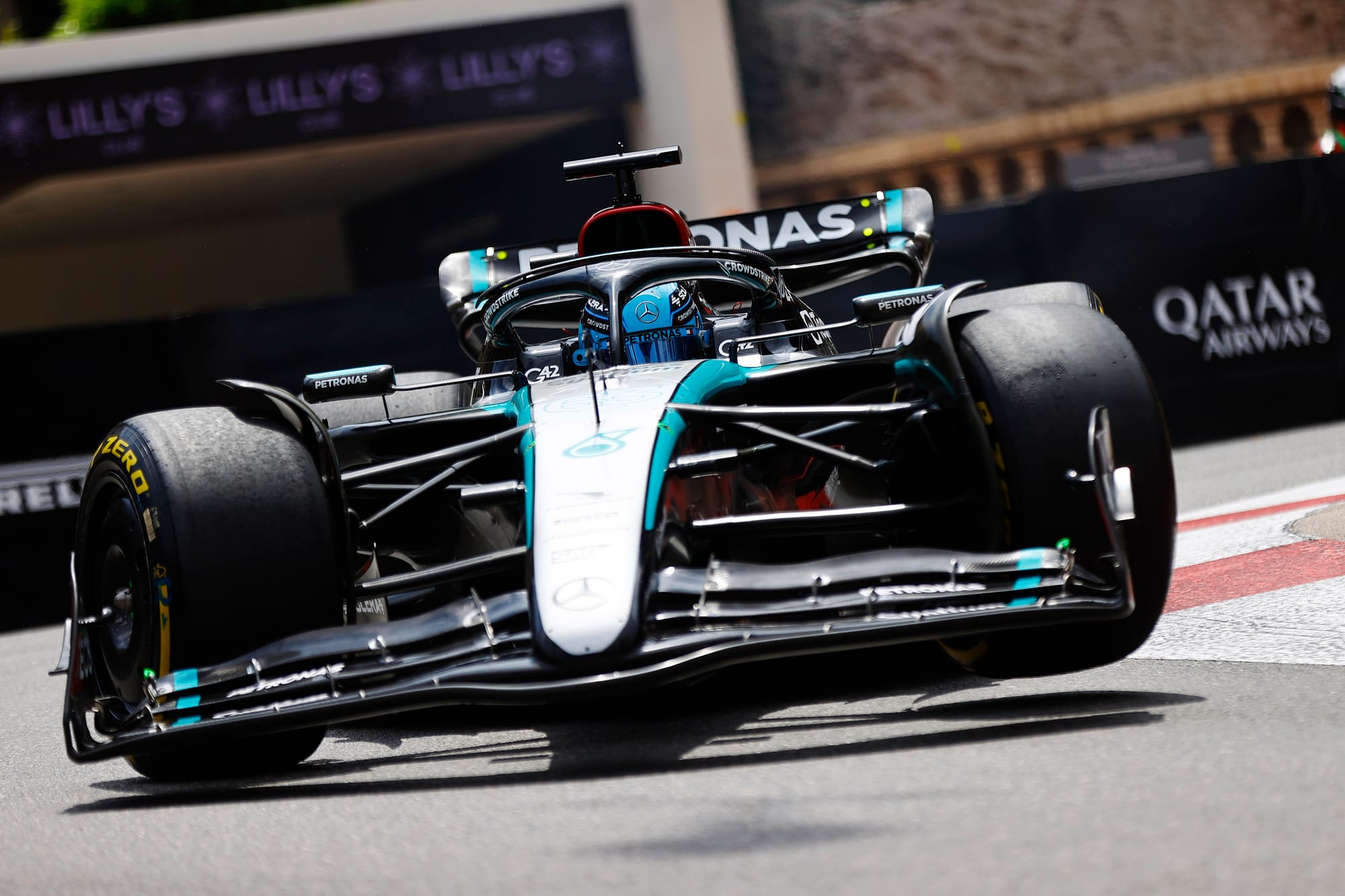
The troubles of Mercedes have been a recurring theme in this rules era, but despite a difficult start to the season there are signs that it could turn from loser to winner in the not-too-distant future.
Last year, Mercedes struggled badly for rear stability in the faster corners. It’s a characteristic the drivers have complained about since 2022.
This year, that’s turned on its head. The problem now is front-end grip in slow corners. As Lewis Hamilton says: “The slower you go the less the car wants to turn.”
And when the team makes changes to improve the front end for slow corners, as it did for the Saudi Arabian Grand Prix in March, that sacrifices high-speed performance.
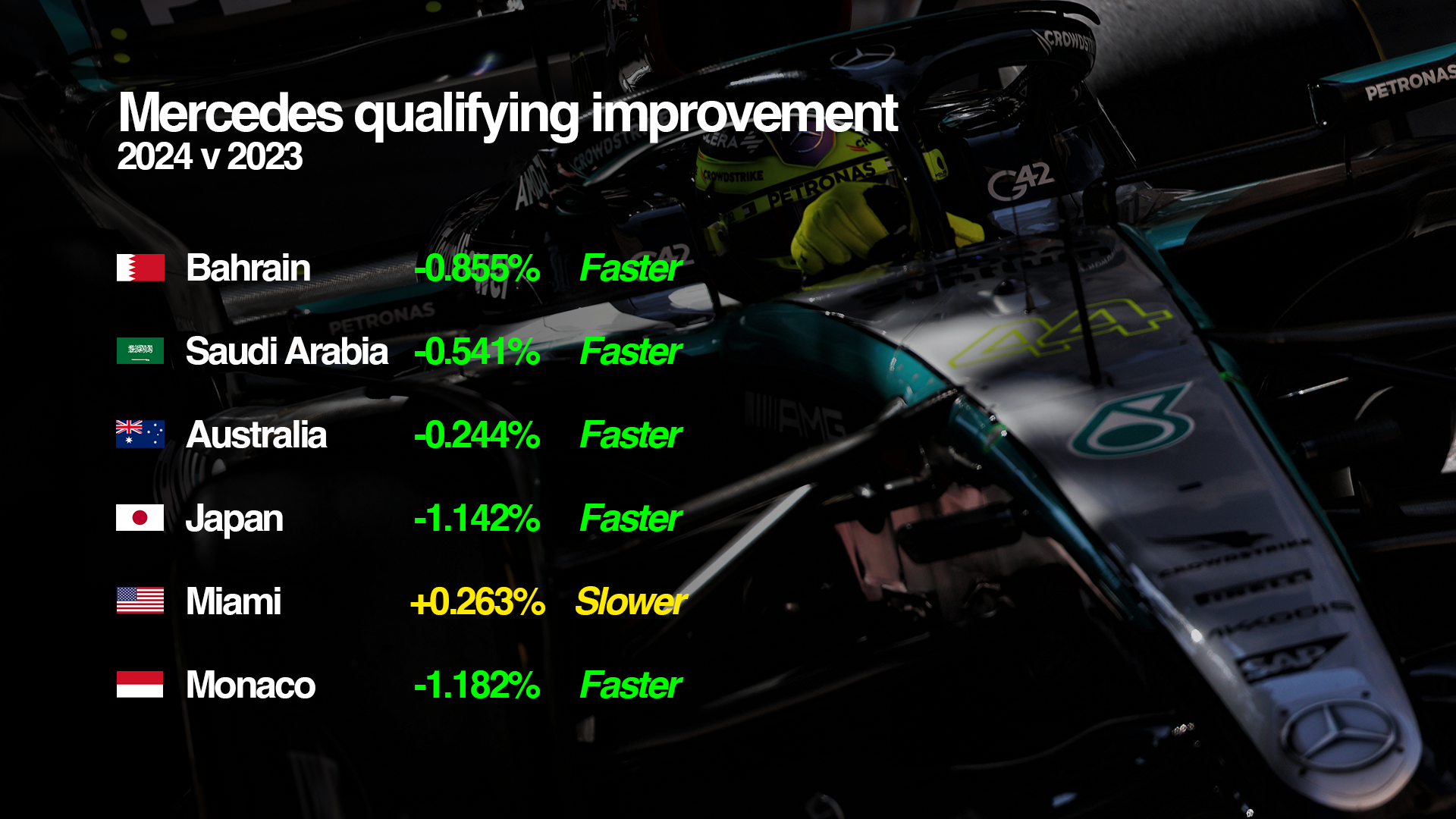
Team principal Toto Wolff claims Mercedes knows what it did to solve the high-speed problems and what made last year’s car good in the slow stuff. Now, he says Mercedes just needs to “bolt a car together that does both”.
That’s easier said than done considering that making the car work across a range of ride heights and attitudes is the big challenge of these regulations. But Mercedes does now have a clear direction.
It’s now about steady development gains rather than searching for magic bullets to unlock performance - and that’s a new experience for Mercedes under the current regulations.
Winner: RB
Midfield leader
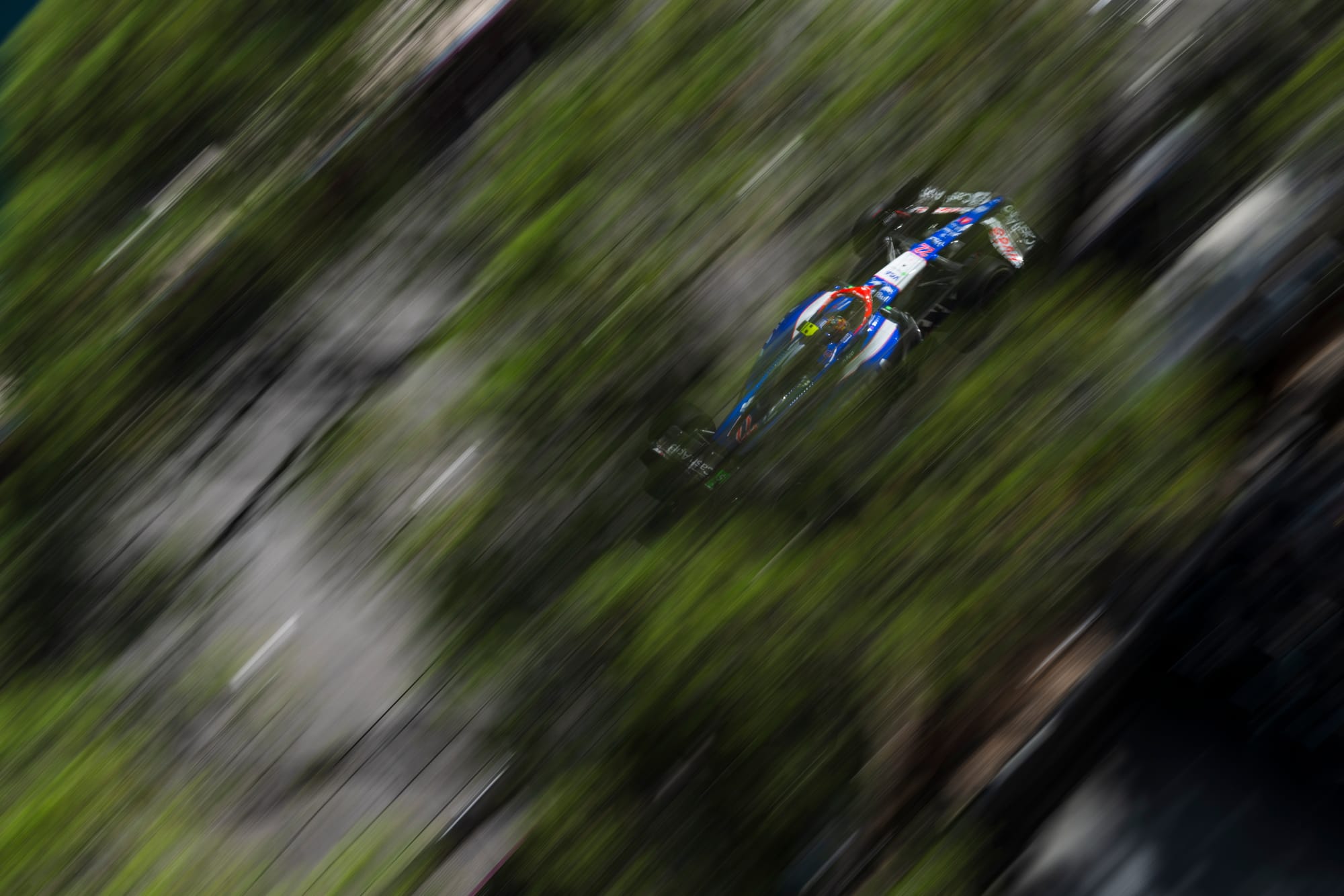
Last year’s AlphaTauri battled corner-entry instability in medium- and low-speed corners. That improved in the closing stages of the season.
This year, what’s now called the VCARB01 has, according to racing director Alan Permane, proven to be at its best in slower corners.
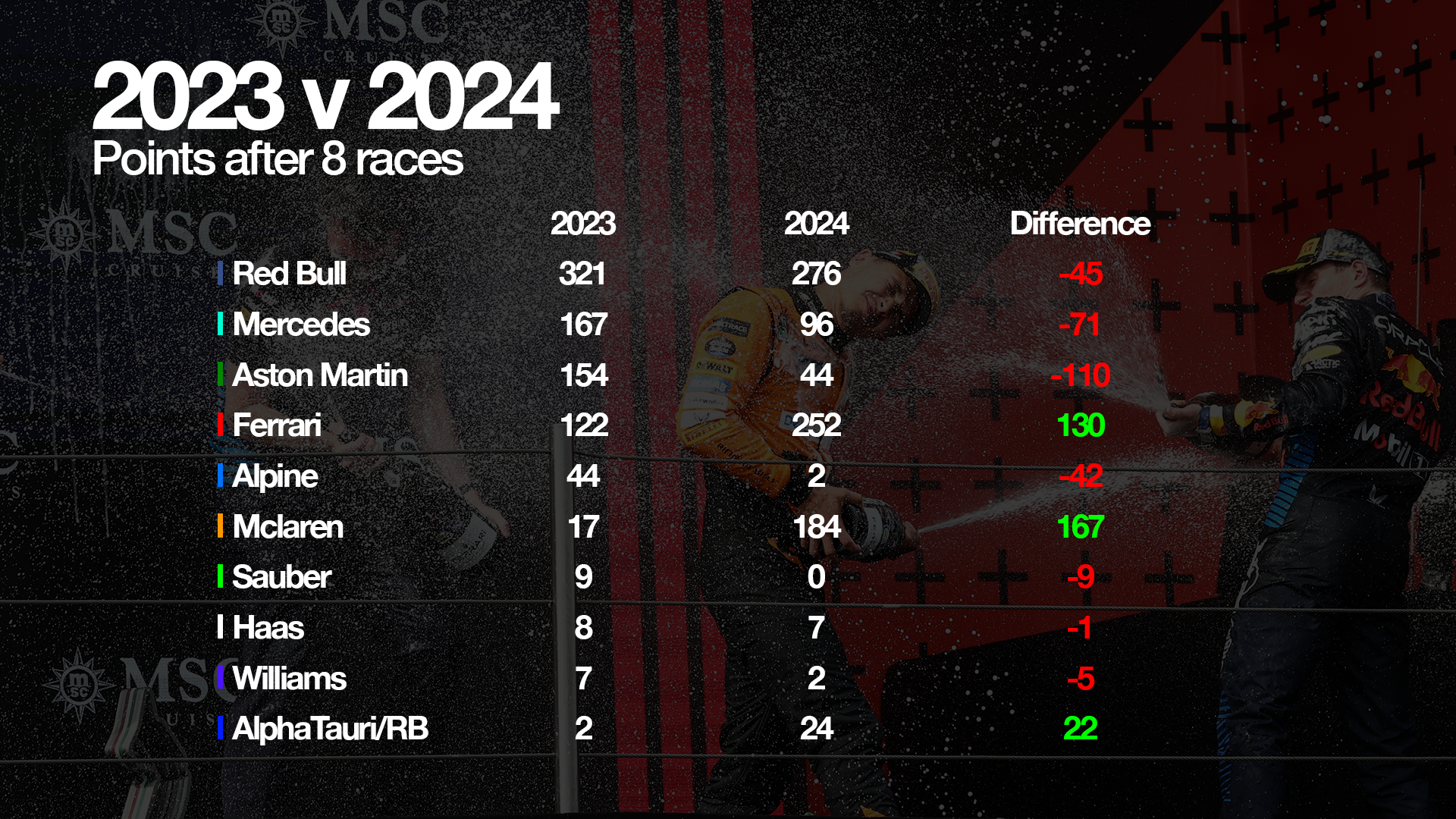
It has been the class of what’s considered the second group in F1. So much so that it’s been ahead of Aston Martin of late and racked up a healthy 24 points so far - 22 more than at the same stage last year.
Another problem that RB is working on is the fact the car isn’t great off the line. But given it shares kit with Red Bull Racing, that’s more about operation and preparation than the hardware.
Loser: Sauber
Lacking in grip
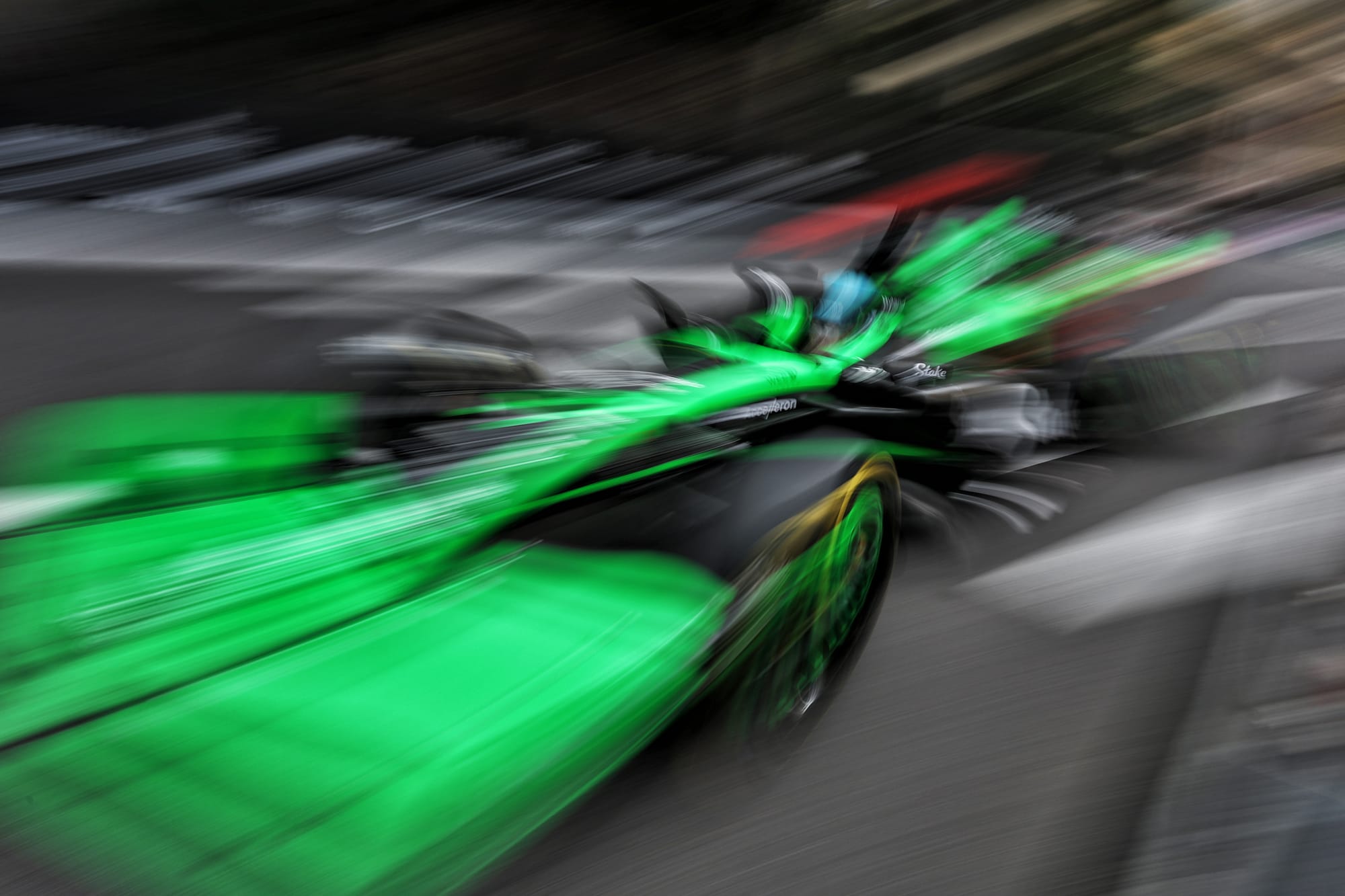
Audi’s future works team started the season with a car that could have scored points but for the pitstop disasters that have been eliminated by wheelnut and axle modifications. But it’s been slowest for the past three events in Miami, Imola and Monaco.
SAUBER - LAPS IN TOP 10
Bahrain: 14
Saudi Arabia: 14
Australia: 1
Japan: 0
China: 2
Miami: 6
Imola: 0
Monaco: 0
Last year’s car was too draggy and unstable in the fast corners. Sauber has less of a drag problem this year, but still the main strength is seen as the slower corners with the big deficit to the frontrunners in the fast stuff.
The fundamental problem appears to be a lack of aerodynamic load. There have been times recently, for example at Imola, where the balance has been good but the overall grip has been lacking. Even in low-speed Monaco the drivers struggled for confidence.
This car needs some significant upgrade progress, and fast.
Loser: Red Bull
Battling old problems
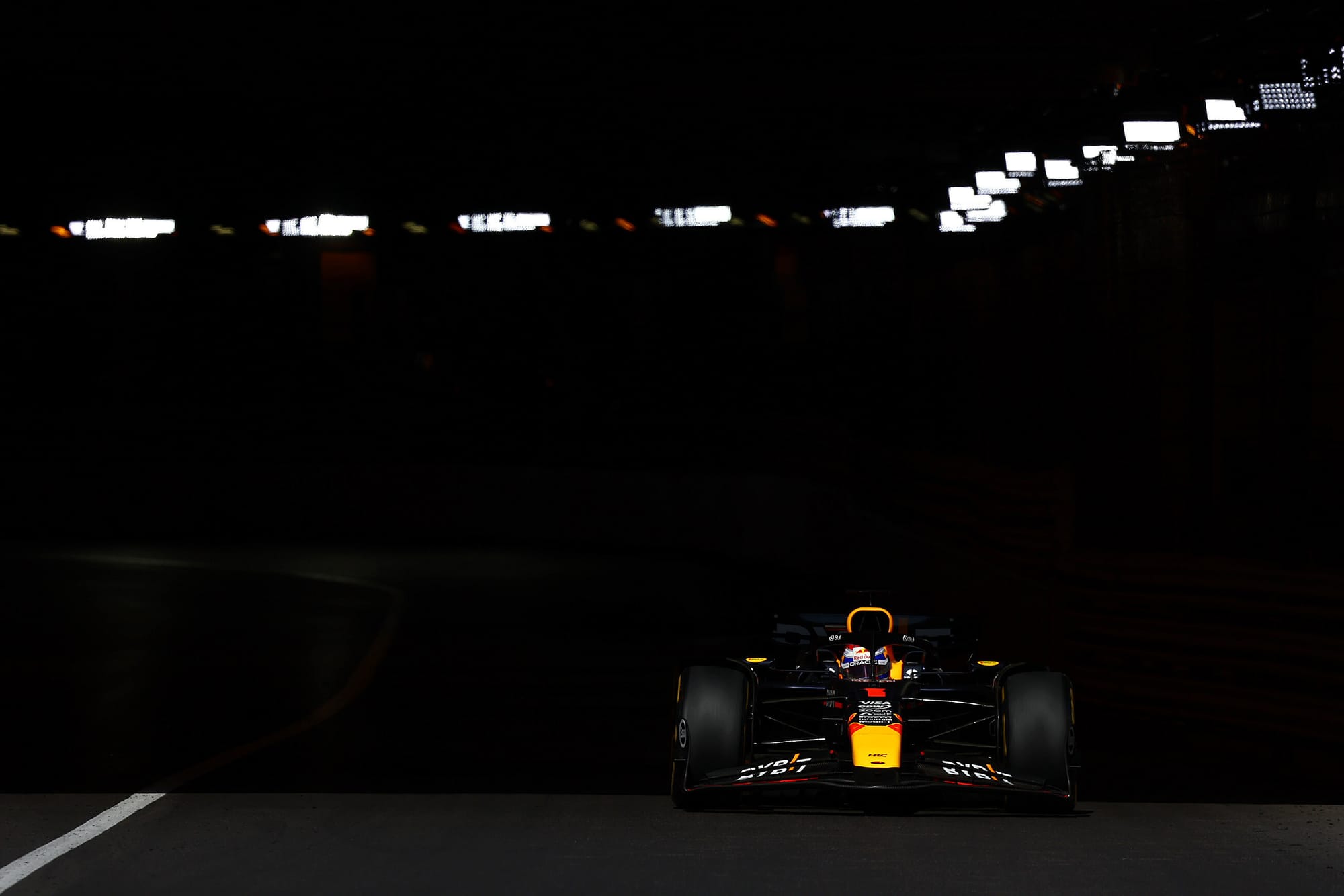
It seems absurd to call the team that has won five out of eight grands prix and taken seven out of eight pole positions a loser.
But it’s a relative game and given its supremacy last year and the inevitable improvement by rivals, it was almost impossible for Red Bull to be classified as a winner right now.
While the results suggest that Red Bull created problems with the new RB20 given how dominant its predecessor was, the reality is that its strengths and weaknesses are much the same. It’s just that the competition has sped up and therefore these weaknesses are exposed.
“When you’re not improving your weakest point, you get found out” is how Max Verstappen summarises that situation, the bumps and kerbs of Monaco having made the car difficult to drive.
So what exactly is the problem? Well, the rear suspension is not that compliant in roll - so when under load in corners - thanks to high lateral stiffness. This is combined with a car that is compliant vertically, which works well with the complex underfloor design and minimises the aerodynamic bouncing problems.
However, in Monaco Red Bull was suffering from mechanical bouncing. And this couldn’t be eliminated without sacrificing far too much downforce and making the car much slower.
This means, as Verstappen says, “any track that is bumpy or you have to ride kerbs will be tricky”.
As Monaco was the worst-case scenario for Red Bull the car will still thrive at the majority of tracks.
It could still mean that at circuits such as Baku and Singapore’s Marina Bay, and perhaps even more conventional tracks with a lot of kerb-riding such as Montreal and Monza, Red Bull might face more of a challenge.
But when you start on top, you have to make rapid progress just to stand still and although Red Bull has lost out in the development war, it’s still on course to win a lot more races than it loses.


